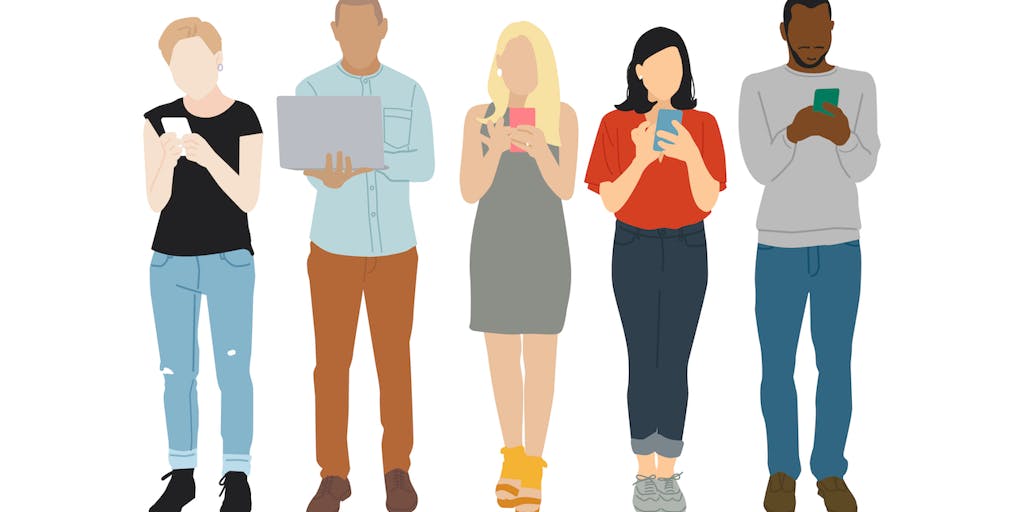The Digital Divide 2.0: Navigating Digital Equity and Health Equity in Education

More than two years in the past, educators across the nation started to have interaction in dialogue relating to the digital divide, as they acknowledged the fact that many college students didn’t have access and connectivity as as soon as believed. A time period initially utilized to explain the technology-access cut up between these dwelling in city areas versus rural communities, extra lately it’s been used to focus on that solely two-thirds of the world’s inhabitants has entry to the web, according to the United Nations, and an estimated 42 million Americans shouldn’t have broadband entry, in keeping with a BroadbandNow research study printed in 2021.
So a brand new idea has emerged: “digital equity.” It’s an necessary concept, and one to which educators and training establishments ought to pay shut consideration.
According to the National Digital Inclusion Alliance, digital equity is a “condition in which all individuals and communities have the information technology capacity needed for full participation in our society, democracy, and economy.” This definition factors to alternatives to take motion. The phrase “information technology” represents entry, or an absence thereof, to digital infrastructure. The phrase “capacity” highlights that digital expertise and digital literacy are mandatory for folks to completely use expertise. Failing to own such expertise prohibits folks from “full participation in our society, democracy, and economy.”
This understanding has led researchers and well being care professionals to start out making the case that the digital divide can really negatively have an effect on folks’s well being. This makes entry or lack of entry to expertise one of many many social determinants of health, or circumstances that affect well being dangers and outcomes. According to the Federal Communications Commission, evidence is exhibiting a powerful relationship between broadband entry, web adoption and well being outcomes. The FCC goes on to notice that “fostering digital equity and health equity are inextricably intertwined.”
What does this imply for educators and training technologists? We have an moral duty as a group of these dedicated to the development of society by way of training and transformational assets to advertise infrastructure entry, digital literacy and talent attainment, all to advertise digital fairness. Failure to take action will result in additional declines in well being, democratic participation and productiveness inside our communities.
Growing Awareness
Luckily, we don’t have to do that work alone. Mainstream consciousness of the entry hole is rising, which has inspired companies like AT&T and Comcast and organizations like United Way to reply by creating worker and group campaigns to deliver forth options.
Such consciousness has additionally impressed a surge in federal, state and native governments discussing options and infrastructure upgrades. For instance, nationally, the Affordable Connectivity Program is an FCC profit program aimed toward offering inexpensive broadband entry for work, faculty, well being care and extra. It is necessary to notice that members should meet the Federal Poverty Guidelines eligibility requirements to obtain such advantages.
At the state and metropolis stage, Governor Gretchen Whitmer of Michigan signed an Executive Directive in June 2021 to create the Michigan High-Speed Internet Office. With a imaginative and prescient to make sure each residence and enterprise in Michigan can have entry to high-speed web connection, this system goals to serve an estimated 1.24 million Michigan households (31.5 p.c) with out everlasting, fastened web connection at residence. In September of this yr, New York City Mayor Eric Adams and Chief Technology Officer Matthew Fraser introduced the citywide launch of Big Apple Connect. Billed because the largest free municipal broadband program in the U.S., Big Apple Connect will present free in-home high-speed web and primary cable to greater than 200 New York City Housing Authority developments by the top of 2023.
Using taxpayer {dollars} to deal with the digital divide requires not solely consciousness of the entry hole, but in addition compelling knowledge to induce legislative motion. Founded in 2015, the National Digital Inclusion Alliance started a marketing campaign of assembly with community-based nonprofits, native governments, public libraries, regional library councils, school and college applications, state authorities businesses, faculty districts and housing authorities. From their work, the phrases “digital inclusion” and “digital equity” have been adopted and later used in congressional legislation by the use of the Infrastructure Investment and Jobs Act of 2021.
Educators and school leaders ought to construct on these efforts by contemplating the next:
Create an institution-wide taskforce for figuring out short- and long-term group options.
The Department of Education’s Office of Educational Technology launched a report in September 2022 that outlined a pathway for community-based options in growing digital fairness plans. Compiled with an array of assets, the report particulars three key parts of entry that educators ought to take into account facilitating with their inner and exterior stakeholders: availability, affordability and adoption. Institutions of upper training function a vital and impartial companion to steer conversations that have an effect on the well being and financial mobility of the communities they serve.
Find methods to companion with state and native governments main digital fairness efforts to assist in workforce preparedness.
Started by an executive order in fall 2019 from Colorado Governor Jared Polis, the Colorado Department of Labor and Employment now options an Office of the Future of Work that leads the state’s Digital Equity, Literacy, and Inclusion Initiative. As president of the Community College of Aurora, I lately had the pleasure of talking on panel at a Denver-area chamber of commerce workforce development event, which included audio system from the Office of the Future of Work and a collection of conversations about larger training’s function in assuring a viable and sustainable workforce with a eager deal with digital literacy and inclusion.
The preparedness and sustainability of the American workforce will depend on governments and larger training performing now to make sure a digitally accessible, expert and equitable future.






